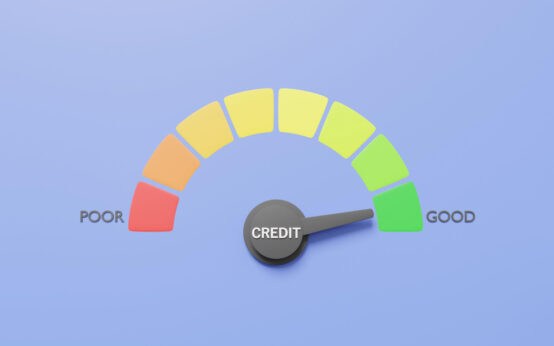Looking to boost your business’s bottom line? Increasing your business revenue often involves a strategic approach that encompasses various elements like understanding market trends, enhancing customer experience, and optimizing your pricing strategies. As you explore these tactics, delve into digital marketing as a powerful tool for growth. Let’s discover key practices that can effectively increase your business revenue.
Understand Market Trends
Analyzing current market trends is essential for boosting your business revenue. Understanding these trends helps in predicting future demands and adjusting your offerings accordingly. By monitoring these shifts, businesses can remain relevant and competitive.
Regularly assessing consumer behavior provides insights into what’s driving their purchasing decisions. This information allows you to tailor your products or services to better meet their needs, potentially increasing sales.
It’s equally important to keep an eye on your competitors. Analyze their strategies to identify gaps in the market that your business can fill. Staying ahead in the industry requires a constant evaluation of competitors’ strengths and weaknesses.
Additionally, consider emerging technologies and how they could impact your industry. Staying informed of technological advances enables businesses to capitalize on new opportunities and additional revenue streams. This proactive approach also positions you to better respond to market fluctuations and economic changes.
Focusing on sustainable business practices aligned with market trends ensures long-term growth and stability. Evaluate your current strategy, and adjust based on comprehensive market trend analysis to enhance your revenue potential.
Implementing key insights from market trend analysis minimizes risks by preparing businesses for unexpected changes. This readiness not only boosts revenue but ensures sustained growth and resilience.
Enhance Customer Experience
Enhancing the customer experience is vital for increasing your business revenue. Your customers are at the heart of your business, so providing them with exceptional service can lead to higher customer retention and increased sales. Start by gathering feedback from your customers through surveys or reviews to understand their needs and expectations. Listening to the customers will help you identify areas for improvement.
A personalized approach can make a significant difference. Train your staff to interact with customers in a friendly and helpful manner. You can also use technology to personalize experiences, from tailored email recommendations to adaptive shopping suggestions on your website. This personalization makes customers feel valued and understood.
Another crucial strategy is ensuring ease of service. Simplify processes such as checkout and payment methods, and ensure your website is user-friendly. A seamless experience increases the likelihood of customers completing their purchases, thereby boosting sales.
Responsive customer support is essential. Ensure that customer inquiries are handled promptly, whether through chat support, phone, or email. Quick resolution of issues leaves a lasting positive impression on customers.
Incorporating customer feedback into your product development or service improvement is another way to show customers that their opinions matter. By integrating their suggestions, you not only improve your offerings but also foster a sense of community and loyalty among your clientele.
Ultimately, a focus on the customer experience leads to higher satisfaction and can transform one-time buyers into loyal advocates, contributing to increased revenue for your business.
Optimize Pricing Strategies
One crucial approach to boosting business revenue is to optimize pricing strategies. Effective pricing can significantly impact your bottom line, increasing both sales volume and profit margins. To begin, analyze different pricing models that may suit your business. For instance, consider implementing value-based pricing, which focuses on the perceived value to the customer rather than the cost of goods sold. This approach can help in capturing more value for your services or products.
It’s essential to regularly review and adjust prices based on market conditions, demand fluctuations, and competitor pricing. Conduct A/B testing to understand how different price points affect sales and customer response. Use data analytics tools to gather insights from customer data and buying patterns. This information is vital for making informed pricing decisions.
Additionally, segment your customers and tailor pricing strategies accordingly—offering discounts or exclusive packages for loyal customers can enhance customer retention and increase revenue. Be transparent about pricing and any additional costs to maintain trust with your customers.
Dynamic pricing might also be a beneficial strategy. It involves adjusting prices in real-time based on demand, competition, and other external factors. This flexibility can maximize revenue by leveraging peak shopping periods to increase prices slightly or offering deals during slower periods to boost sales.
Furthermore, consider utilizing psychological pricing techniques to make your prices more appealing. For instance, pricing a product at $9.99 instead of $10 can psychologically appear more affordable, often leading to increased sales.
Implement these pricing strategies effectively, and you’ll create a balanced approach that not only attracts customers but also maximizes profits, driving substantial revenue growth for your business.
Leverage Digital Marketing
Digital marketing serves as a powerful tool to boost your business revenue. With the right strategies, it can significantly broaden your customer base and enhance engagement.
Start by identifying which digital channels work best for your audience. Consider social media platforms, email marketing, and search engine optimization (SEO) as crucial elements in your strategy. Each channel offers unique opportunities to reach potential customers.
Social media marketing enables you to engage with your audience on a personal level. Craft content that resonates with them, encouraging shares and discussions. Paid advertising on platforms like Facebook and Instagram can also help target specific demographics, increasing your brand visibility.
Email marketing remains one of the most effective methods for reaching customers directly. Create personalized, value-driven emails that entice readers to click and explore your offerings. Use A/B testing to determine which email campaigns perform best and adjust accordingly.
SEO is fundamental to driving organic traffic to your website. Focus on using relevant keywords that your target audience is searching for. Regularly update your web content to keep it fresh and appealing to both users and search engines. This will help elevate your website’s ranking in search results, enhancing discoverability.
Analytics and Data
Utilize analytics tools to track the success of your digital marketing efforts. These insights allow you to understand consumer behavior, measure conversion rates, and optimize future campaigns. Continuously refining your digital marketing strategy based on data-driven decisions will ensure maximum return on investment.
By effectively leveraging digital marketing, businesses can experience substantial growth in revenue, staying ahead in the competitive marketplace.

 Discover the impact of credit score ranges on your finances <p class='sec-title' style='line-height: normal; font-weight: normal;font-size: 16px !important; text-align: left;margin-top: 8px;margin-bottom: 0px !important;'>Uncover the credit score ranges and enhance your financial opportunities!</p>
Discover the impact of credit score ranges on your finances <p class='sec-title' style='line-height: normal; font-weight: normal;font-size: 16px !important; text-align: left;margin-top: 8px;margin-bottom: 0px !important;'>Uncover the credit score ranges and enhance your financial opportunities!</p>  How to make money online: 4 ways without leaving home <p class='sec-title' style='line-height: normal; font-weight: normal;font-size: 16px !important; text-align: left;margin-top: 8px;margin-bottom: 0px !important;'>Learn how to make money online intelligently and work from anywhere with total freedom!</p>
How to make money online: 4 ways without leaving home <p class='sec-title' style='line-height: normal; font-weight: normal;font-size: 16px !important; text-align: left;margin-top: 8px;margin-bottom: 0px !important;'>Learn how to make money online intelligently and work from anywhere with total freedom!</p>  The importance of enterprise value in evaluating business worth <p class='sec-title' style='line-height: normal; font-weight: normal;font-size: 16px !important; text-align: left;margin-top: 8px;margin-bottom: 0px !important;'>Market cap is useful, but enterprise value is the more accurate tool for understanding a company’s total worth.</p>
The importance of enterprise value in evaluating business worth <p class='sec-title' style='line-height: normal; font-weight: normal;font-size: 16px !important; text-align: left;margin-top: 8px;margin-bottom: 0px !important;'>Market cap is useful, but enterprise value is the more accurate tool for understanding a company’s total worth.</p>